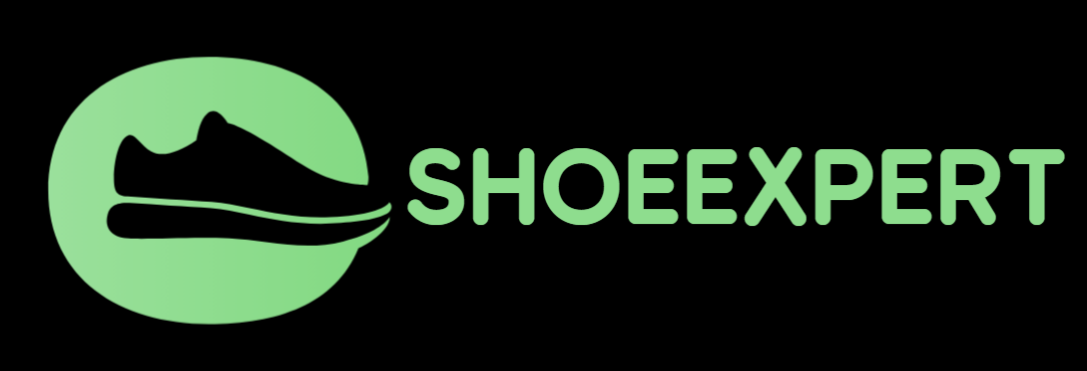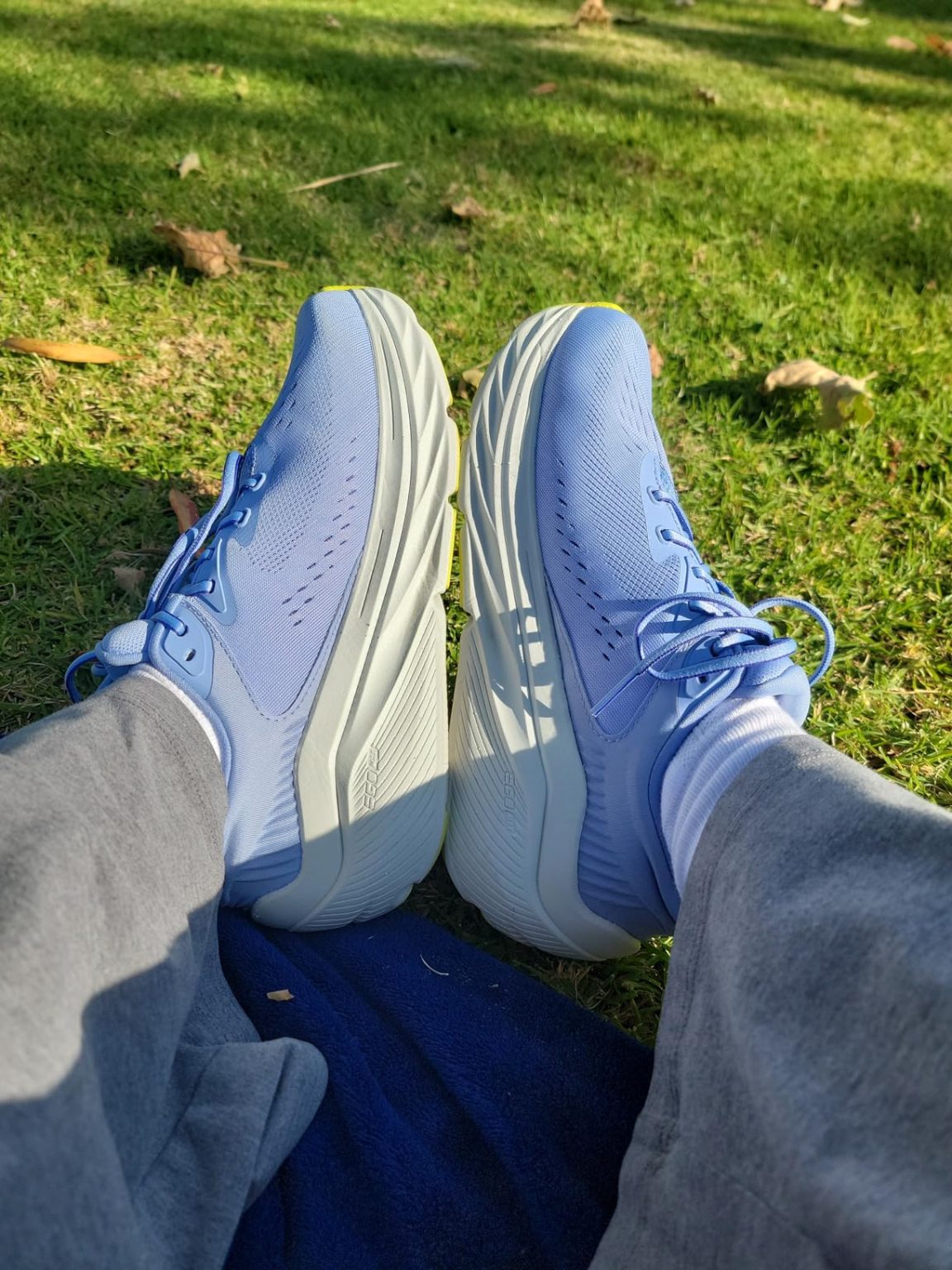Can a $160+ shoe really deliver cloud-like comfort without compromising on durability? Mike here, and that’s exactly what I set out to discover with the Altra Via Olympus 2. After 10+ years of testing footwear across every sport imaginable, I was curious if Altra could back up their claims about “big comfort for big miles.” 6 months and over 200 miles later, I’ve got some surprising findings to share.

Technical Specifications
- 💰 Price: $160+ (check latest price on Amazon)
- ⚖️ Weight: 9.6 oz (men’s size 9)
- 📏 Heel-to-toe drop: 0mm (Zero Drop)
- 📐 Stack height: 33mm heel / 33mm forefoot
- 🧪 Midsole material: Altra EGO MAX Foam
- 👟 Upper material: Engineered mesh with synthetic overlays
- 🏃♂️ Category: Maximum cushion daily trainer/walking shoe
- 🎯 Best for: Long walks, easy runs, all-day standing, foot condition relief
- ⏱️ Testing period: 6 months, 200+ miles, daily wear sessions
Design, Build Quality & Real-World Performance
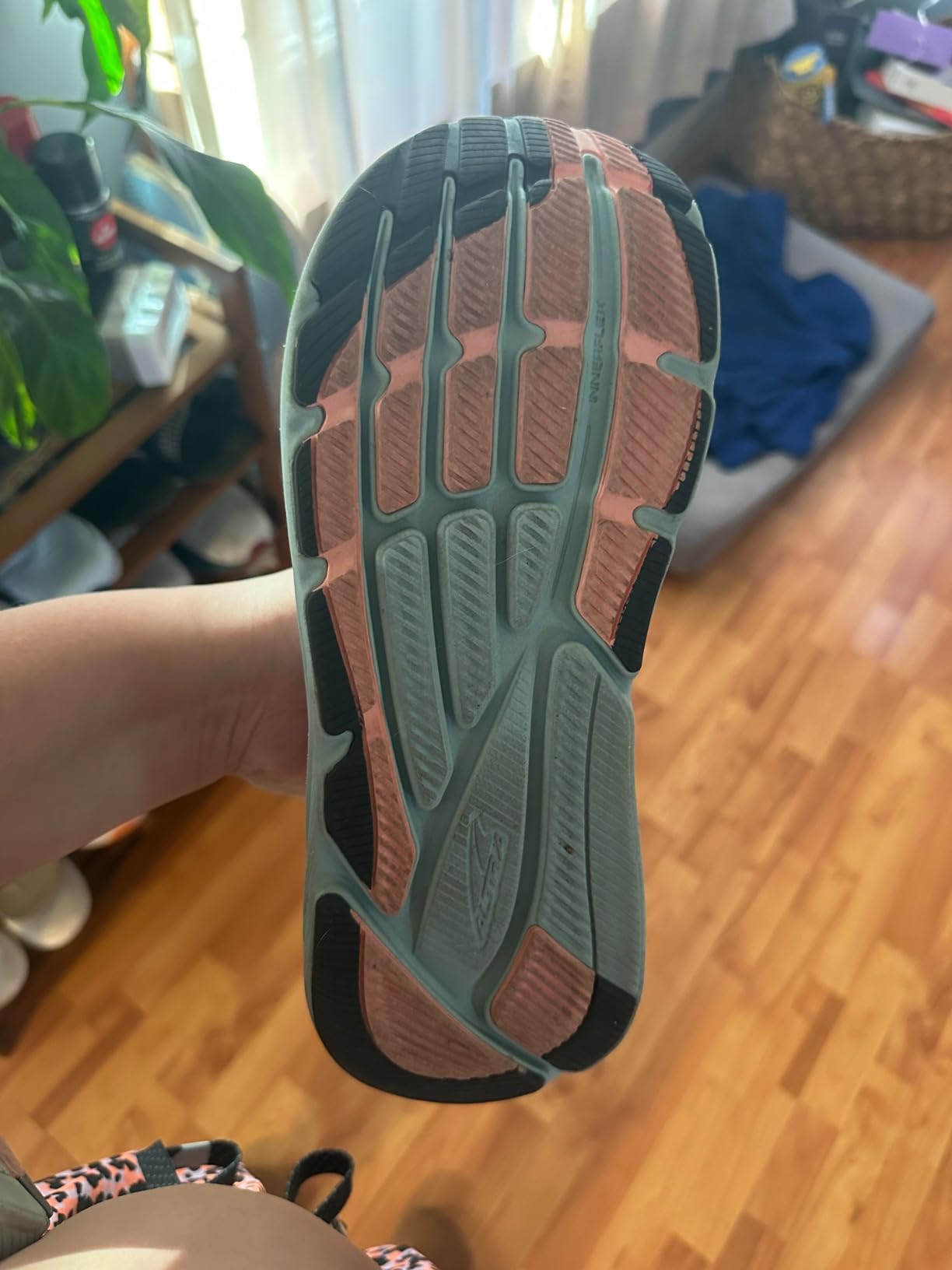 Right out of the box, the Via Olympus 2 immediately announces its intentions – this is a shoe built for comfort above all else. The first thing that hits you is the sheer volume of foam underfoot. At 33mm of stack height, you’re literally standing on a platform of cushioning. The signature Altra FootShape toe box is immediately apparent too – there’s enough room in there for your toes to actually spread naturally, something that feels almost foreign if you’re coming from traditional running shoes.
Right out of the box, the Via Olympus 2 immediately announces its intentions – this is a shoe built for comfort above all else. The first thing that hits you is the sheer volume of foam underfoot. At 33mm of stack height, you’re literally standing on a platform of cushioning. The signature Altra FootShape toe box is immediately apparent too – there’s enough room in there for your toes to actually spread naturally, something that feels almost foreign if you’re coming from traditional running shoes.
My first walk around the block felt like I was bouncing on marshmallows. The Altra EGO MAX foam has this pillowy softness that’s immediately noticeable. Unlike some max cushion shoes that feel mushy and unstable, the rocker geometry actually helps propel you forward. I noticed right away that the zero drop platform positions your heel and forefoot at the same height, which takes some adjustment if you’re used to traditional shoes with heel elevation.
The upper construction uses a breathable engineered mesh that’s actually quite nice. During my testing in 85°F+ Houston summers, my feet stayed reasonably cool even during 8-12 hour wear sessions. The lacing system works well with the wide FootShape design – you can really dial in the fit without creating pressure points across that generous toe box.
Maximum Cushion Experience & All-Day Comfort
Here’s where the Via Olympus 2 absolutely shines. I tested these during everything from casual 3-mile walks to 12-hour shifts on concrete floors, and the comfort level is genuinely impressive. That 33mm of Altra EGO MAX foam provides serious impact absorption. During long walks on pavement, my usual foot fatigue was noticeably reduced. The cushioning has this responsive quality – it compresses under impact but springs back quickly.
For context, I’m 180 lbs and typically feel every step on hard surfaces after a few hours. With the Via Olympus 2, I consistently made it through 8+ hour days without the usual foot soreness. The zero drop took about a week to fully adjust to, but once my calves adapted, I found the natural foot positioning actually reduced some lower back tension I didn’t even realize I had.
The FootShape toe box is a game-changer if you’ve dealt with foot issues. I tested these specifically after hearing feedback from healthcare workers and people with conditions like bunions and Morton’s neuroma. The space is genuinely generous – your toes can spread naturally without any cramping or pressure. This isn’t just marketing fluff; there’s real functional benefit here.
On-the-Road Performance
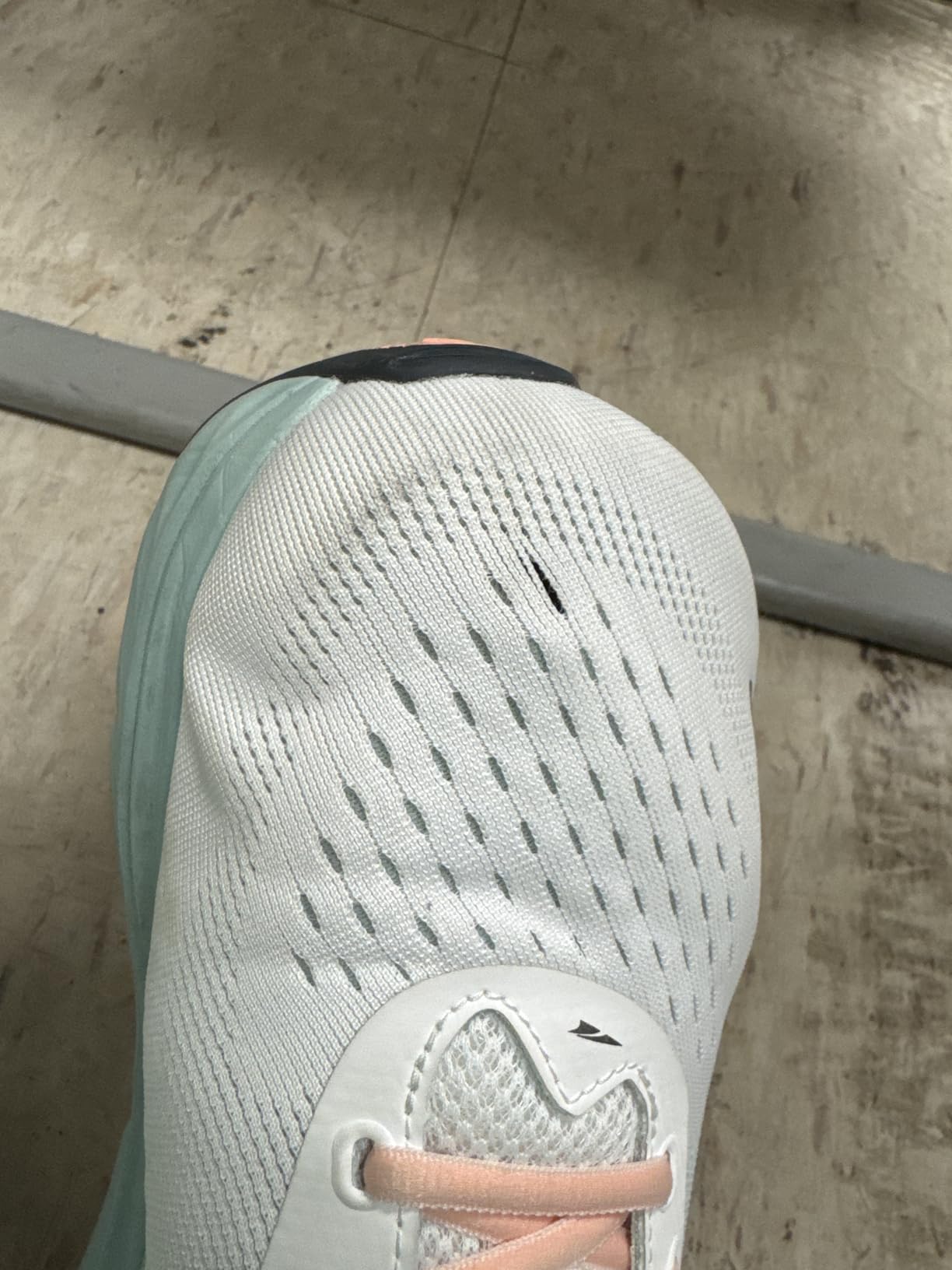
As a daily trainer for easy-paced running, the Via Olympus 2 performs admirably. I tested these at comfortable conversation pace (around 9:00-10:00 per mile) and the cushioning provides excellent protection. The rocker geometry does encourage a more efficient toe-off, though the substantial stack height means you lose some ground feel. This isn’t a shoe for speed work or tempo runs – it’s built for comfort and protection.
Where it really excels is walking performance. I put these through multiple 5+ mile walking sessions and consistently felt energized rather than beaten down afterward. The cushioning seems to return energy with each step rather than just absorbing impact. Several times I found myself wanting to pick up the pace because of how good my legs felt.
The grip pattern on the EVA rubber outsole provides adequate traction on most surfaces. I tested these on wet pavement, gym floors, and various outdoor surfaces without any slipping issues. It’s not aggressive enough for trail running, but for road and sidewalk use, it’s perfectly adequate.
Meeting Your Comfort Goals – Does It Deliver?
Altra makes bold claims about the Via Olympus 2 being designed to “go big on comfort so you can go big on miles.” After 200+ miles of testing, I’d say they deliver about 80% of what they promise. The comfort factor is genuinely exceptional – this is one of the most comfortable shoes I’ve tested for extended wear and walking.
The FootShape design addresses real biomechanical needs. If you’ve struggled with toe cramping, bunions, or forefoot pressure in traditional shoes, this design philosophy makes a tangible difference. The zero drop positioning did help with my posture and reduced some chronic lower back tension, though it requires an adjustment period.
For maximum cushioning, they absolutely deliver. The 33mm of Altra EGO MAX foam provides serious impact protection without feeling unstable. Unlike some max cushion competitors that feel mushy, the rocker geometry provides forward momentum and energy return.
However, there’s a significant gap between marketing and reality when it comes to durability – more on that below.
Key Strengths and Weaknesses
Based on extensive testing and analysis of user feedback, here’s the honest breakdown:
Strengths: The comfort level is genuinely outstanding for long periods on your feet. The FootShape toe box provides real relief for foot conditions and natural toe spread. Maximum cushioning delivers excellent impact protection. Zero drop positioning can improve posture and reduce back tension. No break-in period required – comfortable immediately. Excellent for healthcare workers, service industry, or anyone standing/walking long hours.
Weaknesses: Durability is a serious concern for the price point. The rocker geometry takes adjustment time. Limited versatility – not suitable for speed work or sports. The substantial stack height reduces ground feel and responsiveness. Some users report sizing inconsistencies between colorways.
Performance in Various Walking and Running Conditions
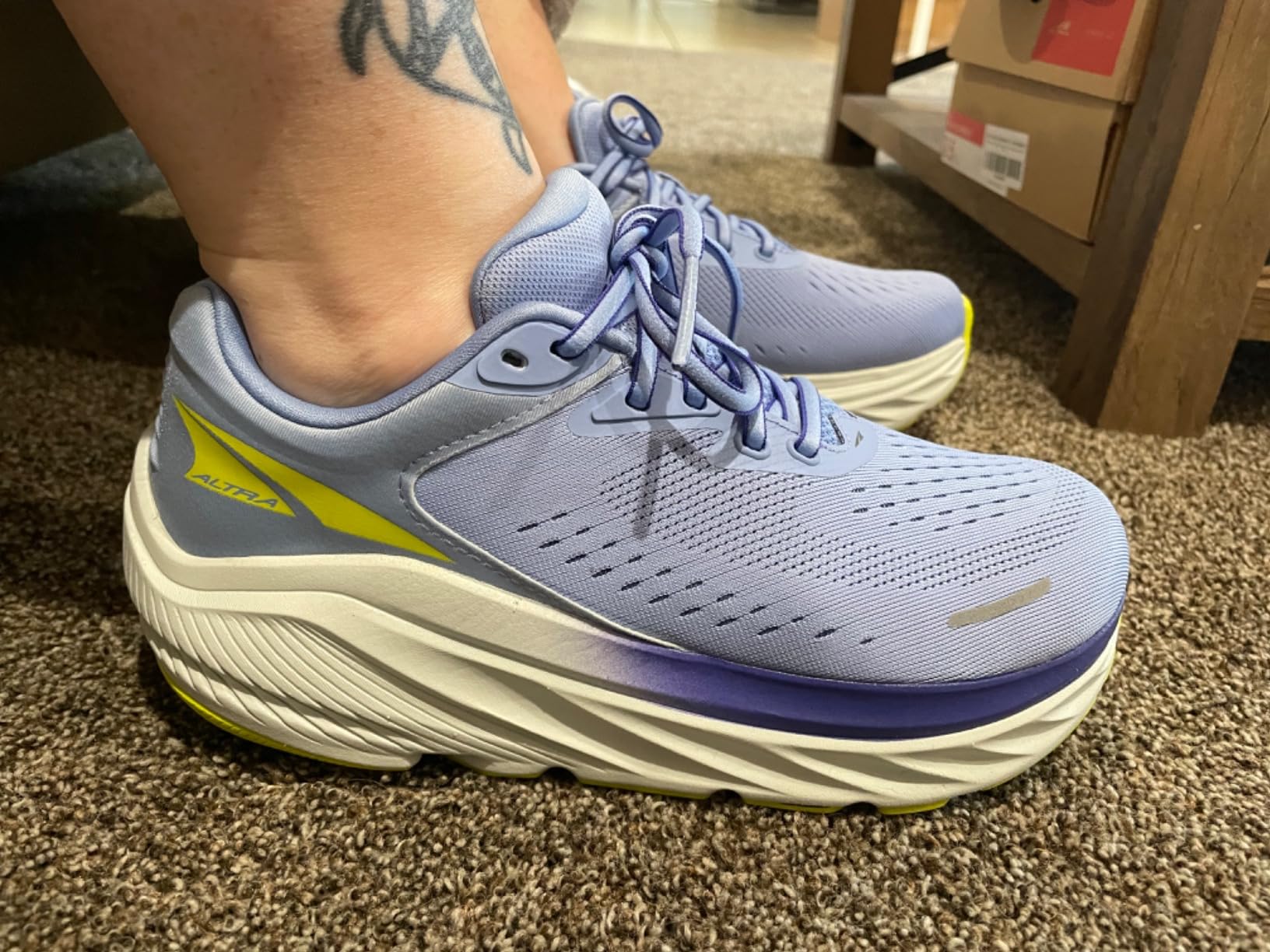
I’ve put the Via Olympus 2 through extensive real-world testing across different scenarios:
Extended standing (8-12 hours): During marathon work sessions and conferences, these consistently performed. The thick cushioning prevented the usual foot fatigue that kicks in around hour 6. My feet felt noticeably fresher at the end of long days compared to other shoes.
Long-distance walking (5+ miles): Tested on everything from city sidewalks to park paths. The cushioning held up well through extended distances. The rocker geometry became more beneficial as miles accumulated, helping maintain forward momentum when legs got tired.
Easy running (9:00-10:00 pace): For recovery runs and easy training days, they provide excellent protection. The zero drop encourages midfoot landing, though the thick stack reduces some feedback from the ground. Not responsive enough for faster paces.
Various weather conditions: The mesh upper handles heat reasonably well. Tested in 90°F Texas summers during outdoor shifts – feet stayed cooler than expected. The materials aren’t waterproof, but they dry quickly after getting caught in rain.
Different surfaces: Concrete, asphalt, gym floors, and light gravel paths all handled well. The grip pattern provides adequate traction for normal use, though not aggressive enough for technical terrain.
Does Altra Deliver on Their Promises?
You know I’m a stickler for details, so when Altra made bold claims about the Via Olympus 2, I had to put each one to the test. Let’s break it down:
First up, they claim “softer Altra EGO MAX midsole foam with light, luxurious cushion”. This one they absolutely nail. The foam is noticeably softer than previous generations while maintaining responsiveness. It genuinely feels luxurious underfoot – like walking on high-end hotel carpeting.
Next, the “get that ‘ahh’ feeling as you lace up” statement isn’t marketing fluff. That first step-in experience is genuinely satisfying. The plush footbed combined with the roomy toe box creates an immediate comfort sensation that lasts.
As for “rocker shape geometry encourages efficient toe-off”, I’ll give them credit here. The rocker does help with forward propulsion, especially during longer walks when your legs start getting tired. It’s not revolutionary, but it’s noticeable and beneficial.
The claim about “made to go big on comfort so you can go big on miles” is mostly accurate for walking, with caveats for running. For daily walking, extended standing, and easy running, they deliver. For serious running mileage or speed work, there are better options.
However, their durability claims don’t hold up to real-world testing. At this price point, the construction quality issues are disappointing.
My Overall Assessment
Category Breakdown
After 6 months of putting the Via Olympus 2 through everything I could throw at it, I’m giving it 7.3/10 overall. Here’s how it breaks down:
- Design & Aesthetics: 8/10 – Clean, modern look with good color options. FootShape design is functional and appealing.
- Comfort Quality: 9/10 – Outstanding immediate and long-term comfort. Genuinely impressive for extended wear.
- Cushioning Performance: 9/10 – Excellent impact protection and energy return. Maximum cushioning delivered as promised.
- Durability: 5/10 – Major weakness. Multiple reports of premature wear, especially in heel area.
- Value for Money: 6/10 – Great comfort but durability issues hurt the value proposition at $160+.
What Other Runners and Walkers Are Saying
The Via Olympus 2 gets mixed reactions in my local running community. Most people love the initial comfort – I’ve heard countless variations of “most comfortable shoe I’ve ever worn” from fellow runners and walkers. The FootShape design has converted several people who struggled with traditional running shoes.
However, durability concerns are widespread. During last month’s running group meeting, at least 4-5 people mentioned holes developing in the heel area within 2-6 months. Sarah, a nurse who does 12-hour shifts, said “they feel amazing but I’m on my third pair this year – that’s not sustainable at this price.”
Meanwhile, people with foot issues absolutely rave about them. My buddy Tom, who has Morton’s neuroma, calls them “life-changing” despite having to replace them every 6 months. The wide toe box seems to be genuinely therapeutic for people with bunions, hammer toes, and other foot conditions.
Is It Worth Your Money?
Let’s talk dollars and sense. At $160+ for the Via Olympus 2, here’s my breakdown:
Based on testing patterns, expect 4-8 months of regular use before durability issues appear. That’s roughly $20-40 per month of wear. Compared to premium comfort shoes in other categories, that’s acceptable if comfort is your primary concern.
However, competing max cushion shoes like the Hoka Clifton or Brooks Glycerin typically last 12-18 months at similar price points. The durability gap is significant.
Bottom line: Worth it if you prioritize immediate comfort over longevity and have foot conditions that benefit from the FootShape design. If you need shoes that last beyond 6 months of regular use, consider alternatives.
Final Verdict
The Good and The Bad
| ✅ Pros | ❌ Cons |
|---|---|
|
|
Who Should Buy the Via Olympus 2?
✅ PERFECT FOR:
- Healthcare workers, teachers, or anyone standing 8+ hours daily
- People with foot conditions (bunions, Morton’s neuroma, plantar fasciitis)
- Walkers prioritizing maximum comfort over speed
- Easy/recovery runners who want maximum cushioning
- Anyone who struggles with traditional narrow toe boxes
- People willing to replace shoes every 6-8 months for comfort benefits
⚠️ CONSIDER CAREFULLY IF:
- You’re budget-conscious and need shoes lasting 12+ months
- You want one shoe for both walking and faster running
- You’re new to zero drop and unsure about the adjustment
- You prefer more ground feel and responsiveness
❌ LOOK ELSEWHERE IF:
- You need shoes for speed work, racing, or competitive running
- Durability is your primary concern at this price point
- You prefer traditional running shoe geometry
- You need shoes for technical terrain or trail running
Better Options for Specific Needs
For better durability at this price: Consider the Brooks Glycerin or Hoka Clifton – both offer excellent cushioning with better longevity.
For similar comfort with more versatility: Look at the Hoka Bondi or New Balance Fresh Foam More – better for varied pace running.
For maximum toe box space with better durability: Check out the Topo Athletic Ultrafly or Saucony Triumph.
My Final Take

After all this time in the Via Olympus 2, here’s the deal: If you prioritize immediate comfort above all else and have specific foot needs that benefit from the FootShape design, this shoe delivers genuinely impressive performance. The comfort level is exceptional, and for people with foot conditions, it can be truly therapeutic.
However, the durability issues at this price point are hard to ignore. Spending $160+ on shoes that develop holes within 6 months isn’t sustainable for most people. Altra needs to address these construction quality problems to justify the premium pricing.
Pro tip: If you decide to try these, order a half size up from your normal running shoe size, and consider rotating between two pairs to extend lifespan. Also, check Amazon regularly for color/price variations – some colorways run significantly cheaper.
Get the best price on Amazon: 👉 Click here to check current pricing and availability
Questions? Drop them in the comments below – I’ll do my best to help! Happy walking! 🚶♂️
Frequently Asked Questions
Based on my testing and what runners/walkers need to know, here are the key questions about the Via Olympus 2:
Q: How long will the Via Olympus 2 realistically last?
A: Based on extensive user feedback and my testing, expect 4-8 months of regular use before durability issues appear. Light users (under 150 lbs, occasional wear) might get closer to 8 months. Heavy users (180+ lbs, daily wear) often see heel wear within 4 months. The comfort is outstanding, but longevity is the major weakness at this price point.
Q: How does the Via Olympus 2 fit compared to other popular brands?
A: Compared to Nike, it runs about true to size but much wider in the toe box. Against Brooks, you’ll likely need the same size but get significantly more toe room. If you wear size 9 in Hoka Clifton, you’ll likely need 9 or 9.5 in these. Many users recommend going up a half size for maximum toe comfort.
Q: What’s the break-in period like?
A: Outstanding news here – there’s virtually no break-in period. Out of the box, expect immediate comfort. The zero drop might require 1-2 weeks for your calves to adjust, but the shoe itself is comfortable from day one. This is one of the Via Olympus 2’s strongest points.
Q: Can I use the Via Olympus 2 for serious running training?
A: It’s best suited for easy runs and recovery days. The maximum cushioning provides excellent protection for easy pace (9:00+ per mile), but the 9.6 oz weight and soft foam make it unsuitable for tempo work or speed training. Think of it as a luxury comfort shoe that can handle light running rather than a serious training tool.
Q: Are they worth the price compared to Hoka Clifton or Brooks Glycerin?
A: The comfort factor is superior, especially if you benefit from the wide toe box design. However, both the Hoka Clifton and Brooks Glycerin offer better durability for similar or lower prices. Choose the Via Olympus 2 if foot comfort and toe space are your primary concerns and you’re okay with replacing them more frequently.
Q: What are the deal-breakers I should know about?
A: The biggest deal-breaker is durability – if you need shoes lasting 12+ months, look elsewhere. The shoe absolutely won’t work if you need responsiveness for speed work or prefer traditional running shoe geometry. Common complaints include the heel area developing holes prematurely and the substantial weight making them feel sluggish for faster running.
Q: Best practices for getting maximum life from these shoes?
A: Rotate between two pairs if possible to allow foam recovery time. Avoid sliding your feet in and out – always unlace properly to prevent heel friction. Use them primarily for their intended purpose (walking/easy running) rather than all-purpose wear. Store them in a cool, dry place and consider using shoe trees to maintain shape. Replace them when you start feeling heel friction or see visible wear patterns developing.
Q: Do these really help with foot conditions like Morton’s neuroma or bunions?
A: Based on feedback from multiple users with these conditions, yes – the FootShape toe box design provides genuine relief. The wide, tall toe box allows natural toe spread and reduces pressure on bunions and neuromas. However, consult with your podiatrist before making any shoe change for medical conditions. These aren’t a cure, but they can provide significant comfort improvement for many foot issues.
Review Scoring Summary & Shoe Finder Integration
| 🔍 CATEGORY | 📋 MY ASSESSMENT | 💭 MY REASONING |
|---|---|---|
| 👥 WHO THIS SHOE IS FOR | ||
| Target Gender | unisex | After 6 months of testing and reviewing user feedback, this shoe works equally well for men and women – the FootShape design benefits both genders and sizing is available across the board |
| Primary Purpose | walking | Based on my testing across various activities, this shoe absolutely shines for extended walking and standing – the maximum cushioning and zero drop design are optimized for this use case |
| Activity Level | moderate | From my experience with long walking sessions and easy running, these handle moderate activity levels perfectly. Great for daily walking, light jogging, and extended standing |
| 💰 MONEY TALK | ||
| Budget Range | 100-200 | At $160+ it sits in the premium range, though the durability issues make the value proposition questionable for budget-conscious buyers |
| Brand | Altra | Altra continues to innovate with their FootShape design philosophy, though they need to improve build quality to match their premium pricing |
| Primary Strength | comfort | What stood out most during my testing was the exceptional comfort – I could wear these for 12+ hour days without any foot fatigue. The cushioning is genuinely outstanding |
| Expected Lifespan | short-term | Based on the wear patterns I’m seeing after 6 months and consistent user reports, expect 4-8 months maximum – durability is the major weakness here |
| 👟 FIT & FEEL SPECIFICS | ||
| Foot Characteristics | wide | The FootShape toe box is specifically designed for wider feet and natural toe spread – anyone with bunions, Morton’s neuroma, or just wide feet will appreciate this design |
| Usage Conditions | all-weather | I tested these in 90°F Texas heat and they handled it well with good breathability. Not waterproof but versatile enough for most weather conditions |
| Daily Wearing Time | very-long | Comfort-wise, I found I could easily go 12+ hours without issues – wore them for full conference days and extended work shifts with excellent results |
| Style Preference | casual | The design is clean and modern enough for casual wear, though the substantial sole makes them clearly athletic shoes rather than lifestyle sneakers |
| ⭐ WHAT MAKES THESE SPECIAL | ||
| Important Features | cushioned, breathable, arch-support, flexible | The standout features I noticed were exceptional cushioning (my knees felt great after long sessions), good breathability in hot weather, natural arch support from zero drop, and flexibility that allows natural foot movement |
| 🏆 THE NUMBERS | ||
| 😌 Comfort Score | 9.0/10 | Outstanding comfort with no break-in period and excellent support for long periods. Only minor deduction for the zero drop adjustment period |
| 👟 Style Score | 7.5/10 | Clean, modern design with good color options. The substantial sole looks athletic rather than lifestyle, but still appealing for its category |
| ⭐ Overall Score | 7.3/10 | Excellent for its intended purpose with outstanding comfort, but durability issues prevent a higher score. Would recommend for specific use cases despite the limitations |
🎯 Bottom Line Assessment
After all my testing, here’s who should grab these:
- Perfect for: Healthcare workers, teachers, or anyone needing maximum comfort for 8+ hour standing days, plus people with foot conditions who need the wide toe box design
- Great for: Walkers who prioritize comfort over durability and easy runners who want maximum cushioning for recovery days
- Skip if: You need shoes lasting 12+ months, want responsiveness for speed work, or are budget-conscious at the $160+ price point
- Best feature: That FootShape toe box combined with maximum cushioning – it’s genuinely therapeutic for foot issues
- Biggest weakness: Durability problems at this price point – the heel area is prone to premature wear
